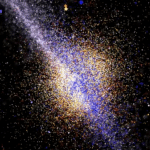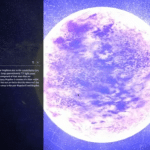 A new satellite launched by the European Space Agency (ESA) on December 19 is set to survey the skies for answers to some of the most compelling questions about our galaxy. Gaia satellite is designed to watch one billion of the Milky Way’s estimated 100 billion stars. Its measurements of the stars’ distances and movements will have unprecedented precision.
A new satellite launched by the European Space Agency (ESA) on December 19 is set to survey the skies for answers to some of the most compelling questions about our galaxy. Gaia satellite is designed to watch one billion of the Milky Way’s estimated 100 billion stars. Its measurements of the stars’ distances and movements will have unprecedented precision.
After almost two decades of planning, the ESA launched the satellite from the European spaceport in French Guiana. The satellite, which was originally named as an acronym for Global Astrometric Interferometer for Astrophysics, was later revised to reference a Greek goddess who is the daughter of Chaos and mother of everything.
This $1 billion mission is tasked with prospecting our star-brimmed galaxy for data points that will furnish the largest ever three-dimensional map of the Milky Way. Scientists will be able to run this map like a time-lapse film, taking it backwards to the galaxy’s origins and spinning it forward to trace how the Milky Way came to be. It will help answer questions like: What forces produced the galaxy’s layout? What events shaped its architecture? How has the Milky Way maintained its spiral shape for billions of years?
Gaia is designed to orbit the sun for five years. During this time, it will pass each of the billion stars it watches about 70 times. It will gather enough data to fill 1.5 million CD ROMS.
Some of this data will be shared through Project Supernova. In this project, the Gaia team plans to ask citizen astronomers to look through their own telescopes, observe the phenomena Gaia has just seen, upload their own pictures and weigh in on what it is.
The data from Gaia will also help furnish a catalogue of the dangerous class of asteroids known as Apollo asteroids. Not much is known about these asteroids, as they are obscured by the sun’s light, but they are worthy of concern. The asteroid that landed in remote Russia last winter was part of this classification. By providing more insight on these dangerous asteroids, scientists posit that Gaia could even save lives.
(Via CS Monitor)





